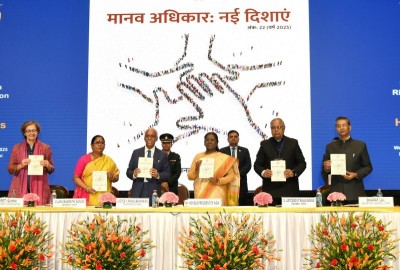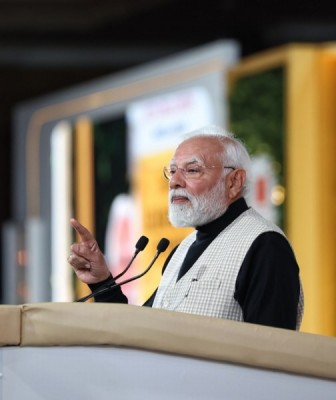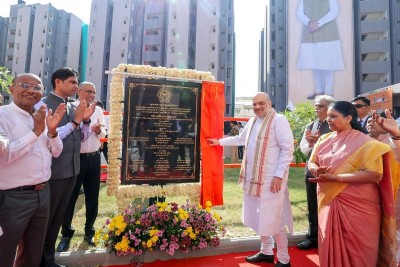
Arunachal Pradesh: Persisting Irritants
The State, however, recorded a total of nine fatalities, including three civilians and six militants, through 2014, as against four fatalities (all terrorists) in 2013. In 2001, at the peak of insurgency, Arunachal had recorded 63 fatalities, including 40 civilians, 12 Security Force (SF) personnel and 11 militants.
A civilian killing was recorded in the State in 2014, for the first time since October 25, 2007. On that day, three AR troopers and a civilian were killed in an ambush carried out by militants of the Isak-Muivah faction of the National Socialist Council of Nagaland (NSCN-IM) at a remote jungle in the Tirap District. Significantly, no SF trooper had been killed since the October 2007 incident, till February 6, 2015.
Fatalities among militants increased from four in 2013 to six in 2014. On October 20, 2014, SF personnel killed two unidentified NSCN-IM militants at Thinsa village in Tirap District. One AK-56 rifle, along with two magazines and 50 rounds of ammunition, and one M-16 rifle with a magazine and 30 rounds of ammunition, were recovered from the slain militants.
Incidents of killing increased from three in 2013 to five in 2014. In the worst incident of 2014, two NSCN-IM militants and two civilians were killed in crossfire between Assam Rifles troopers and militants at Holam village in Khonsa, Tirap District. Two AK-47 rifles, a sniper rifle and an M-16 rifle were recovered from the incident site.
Incidents of killing through 2014 were reported from two Districts, Tirap and Longding. In 2013 fatalities had also been reported from two Districts, Lohit and Changlang. The Government of India (GoI) extended the Armed Forces Special Powers Act (AFSPA) by another six months in Tirap, Longding and Changlang Districts, with a formal notification issued on September 20, 2014. The AFSPA was first implemented in these three Districts on September 17, 1991. Arunachal has a total of 17 Districts.
Meanwhile, the inter-State border dispute between Assam and Arunachal Pradesh flared up again in 2014. On January 29, 2014, 15 persons were killed and another eight received bullet injuries when encroachers from Arunachal Pradesh opened fire with hand-made weapons in the Behali Reserve Forest area of Sonitpur District in Assam. On August 31, 2014, State Home Minister Tanga Bylaing disclosed that Tani Land National Liberation Tigers (TLNLT) claimed responsibility for the attack. TLNLT is a relatively insignificant group demanding a separate homeland for the Tani people, variously known as Mising in Assam and Adi, Nyishi, Galo Bangni, Apa, Tagin, and Hill Miri in Arunachal Pradesh. The genesis of the current border dispute dates back to 1983 when Arunachal, as a Union Territory, started demanding certain plain areas of Arunachal [then known as North-East Frontier Agency (NEFA)] that were transferred to Assam according to a February 23, 1951 notification. The demand was reiterated when Arunachal became a State on February 20, 1987. The Assam Government, subsequently, filed a case in Supreme Court in 1989. In 2006 the Supreme Court formed a commission to identify the boundaries between Assam, Arunachal Pradesh and Nagaland. Despite meeting 19 times (till July 2014), the Commission has failed to resolve the issue.
Terrorist outfits operating in the neighbouring States have primarily been responsible for the violence in Arunachal Pradesh. NSCN-IM, a group principally located and operational in Nagaland, was responsible for two of the three civilian killings reported in Arunachal in 2014 (another civilian death remain unattributed). Of the six militants killed in the State in 2014, four belonged to NSCN-IM, while two were from NSCN-K.
Of 19 militants arrested in eight incidents through 2014, 13 belonged to outfits which are based outside the State’s boundaries. These included five of the Manipur-based Peoples Liberation Army (PLA); four each of the Nagaland-based Unification faction of NSCN (NSCN-U) and NSCN-IM. The other six arrested belonged to Arunachal Pradesh-based outfits – five of the Tai Singpho Security Force (TSSF) and one of the National Liberation Council of Taniland (NLCT). In a significant incident, in a joint operation, SFs arrested five militants of PLA and recovered a large cache of arms and ammunition from their possession from the Pongchau area in Longding District on March 5, 2014. The number of arrests through 2013 stood at 22 in 10 incidents.
Crucially, most of the terrorist formations active in the State have their bases in neighbouring states of Nagaland, Assam and Manipur. The State is principally used by Naga militants, and some local organisations have sprung up with the support of Naga militant groupings. Significantly, Union Ministry of Home Affairs (UMHA) while extending the AFSPA in Tirap, Changlang and Longding Districts, noted that the law and order situation in these Districts remained unchanged and that the Districts were being used by various insurgent groups for trafficking arms and ammunition from neighbouring countries, particularly Myanmar. On August 19, 2014, Inspector General of Border Security Force (BSF, Meghalaya Frontier) Sudesh Kumar observed, “There are isolated instances of arms and ammunition entering into the country at international border with Bangladesh, but a substantial quantity comes from international border with Myanmar and China”
Further, the State has become the ground of turf wars between these outfits. On May 23, 2013, the then Governor of Arunachal Pradesh, General (Retired) J. J. Singh, had noted that the people of three eastern Arunachal Districts - Tirap, Changlang and Longding – were living in fear due to the presence of cadres of the two NSCN factions [NSCN-K and NSCN-IM] in the area, who resorted to kidnappings, extortion and factional feuds. This was further corroborated by the then Intelligence Bureau Chief, Syed Asif Ibrahim, on November 28, 2014, who observed that, in Arunachal Pradesh, there was a turf war between factions of NSCN, and that the safe sanctuaries of the militants in neighbouring countries, particularly Myanmar, were compounding the insurgency problem in India’s Northeast.
The State also faces a security threat from Bodo insurgents from Assam, who have created safe havens along the Arunachal-Assam border. In the aftermath of the December 23, 2014, massacre by the I.K. Songbijit faction of the National Democratic Front of Bodoland (NDFB-IKS) in Assam, Chief Minister Nabam Tuki of Arunachal Pradesh disclosed that the State Government had issued directives to the Deputy Commissioner (DC) and Superintendents of Police (SP) of Districts bordering Assam - West Kameng, East Kameng, Papum Pare, Lower Subansiri, West Siang, East Siang, Lower Dibang, Tirap, Changlang and Lohit - to keep a strict vigil on the possibility of militants sneaking into the State's territory, and observed, “All the available Paramilitary forces have also been instructed by the State Home Department to conduct patrolling along the border areas.”
The Arunachal Pradesh Police has made an action plan to check insurgency in Tirap, Changlang and Longding Districts, which includes the setting up of 11 new Police Stations and upgrading the existing nine Police Stations. 1,769 posts were filled up in the Police department of the three insurgency-affected Districts in 2014. The department also procured 313 INSAS rifles, 158 pistols (9mm), 40 mortars (of 2 inch bore), 33 Light Machine Guns (of 7.62 mm bore), and over 200,000 rounds of AK-47 ammunition during 2014. 28 night vision devices, 20 video cameras, 23 digital cameras and other gadgets were also procured during 2014 for fighting insurgency in these Districts.
In a bid to make Arunachal less depended on the Central Government in the maintenance of law and order and counter insurgency, Union Home Minister Rajnath Singh and Minister of State for Home Affairs Kiren Rijiju, on August 12, 2014, assured all possible support to Arunachal Pradesh for modernization of the State Police. Arunachal was assured that Police modernisation fund would be hiked from INR 110 million to INR 220 million from fiscal year 2014.
In the meantime, the Government of India has commenced work to develop six airports in the State. According to the proposal the first of these airports, at Tezu, is to be made operational in January 2016. The increased air connectivity within the State and with other parts of the country is expected to help in the development of the State. Accelerated development of State’s economy as well as infrastructure are considered in maintaining peace in the region.
Providing a secure environment to carry forward developmental works, however, remains a challenge. Indeed, on January 30, 2015, State Ecology and Mining Minister Kamlung Mosang noted that coal mining in the Namchik-Namphuk coal block in Changlang District had been suspended since May 2012, after GoI directed the State Government to suspend extraction, following involvement of insurgent groups in illegal coal extraction. A number of developmental projects could potentially be jeopardised by the various lingering security threats in Arunachal, even as the dividends of an enduring peace continue to elude the people of the State.
Support Our Journalism
We cannot do without you.. your contribution supports unbiased journalism
IBNS is not driven by any ism- not wokeism, not racism, not skewed secularism, not hyper right-wing or left liberal ideals, nor by any hardline religious beliefs or hyper nationalism. We want to serve you good old objective news, as they are. We do not judge or preach. We let people decide for themselves. We only try to present factual and well-sourced news.







